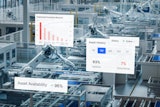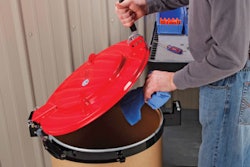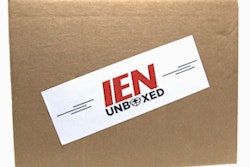This article first appeared in IMPO's July 2012 issue.
How can manufacturers best monitor complex equipment? Technology experts discuss how automation and process controls can manage and monitor interconnected systems like sensors, batteries, temperature, and more.
Which major developments in control systems technology have had the biggest impact on manufacturers in the past few years?
The increased development of Ethernet communications within the industrial control system world is one of the technologies that has had the most impact in the last 2 -3 years. The use of new technology in smart hand held devices will probably be the next big item in the industrial control system world.
- John Handley, Business Development Manager, Revere Control Systems
Why do you think it is important for a control systems integrator to be CSIA certified?
CSIA certification serves two very important functions for the control system integrator. First, it pushes the integrator to improve their business operations. Because the 200 audit criteria address all aspects of running a business, from the business development practices to the back-end billing functions, an integrator that makes a sincere effort to meet the standards of the criteria will make positive changes in the way they conduct their business. Many integrators have stated that such improvement alone is worth the effort and cost of getting certified. Second, the certification provides marketable differentiation from non-certified competitors. Consumers of control system integration services can be assured of several things: that CSIA-certified integrators have a strong degree of financial stability and performance, a potential problem with “garage shop” integrators who may not have the financial wherewithal to fully meet project obligations; that the certified integrator will meet best practices standards for administrative functions such as project management, quality improvement, and safety, aspects of project performance that contribute greatly to project success and customer satisfaction; and that the CSIA-certified integrators have technical management programs and processes in place that verify their ability to develop and manage technical solutions.
- Bruce Koppenhoefer, Communications Director, Revere Control Systems
What are the benefits of going with something like a PAC versus a PLC?
The term PAC (Programmable Automation Controller) was created to help users better define their application needs and allow vendors to more clearly define the capabilities of their controllers; this market has been growing since its introduction in 2001. When compared to the PLC (Programmable Logic Controller), the divergence of characteristics in the PAC is as abundant as their likenesses. The same rugged form factor proven to withstand industry requirements has now been infused with the performance and technology needed to accomplish many tasks required by today’s more complex applications. Bridging the gap between the plant floor and Enterprise Systems is now easier with a single tag name database created in the controller. This database can be available for use when developing Human Machine Interface (HMI), Supervisory Control and Data Acquisitions (SCADA), and for data transfer to Ole for Process Control (OPC) clients and Structured Query Language (SQL) databases.
What types of process data are manufacturers typically looking for? What types of technology are best for retrieving this information and making it useful for manufacturers?
With the capabilities of today’s PAC class controllers, the amount of data available for users is almost endless. The increased performance and processing power allows these devices to multitask more efficiently; this means that while continuing to operate a scan synchronous I/O process, there are still enough resources available to collect process data, crunch complex algorithms, and maintain communications to various networks.
Using OPC allows the PAC to easily share data with a local HMI or SCADA system, providing instantaneous feedback and machine control to users and process engineers. This same technology allows the PAC to interface with Open Database Connectivity (ODBC) compatible servers such as SQL and MS Access. Inserting and updating values within a database opens invaluable opportunities to manufacturers and those with process applications. The ability to populate a database with historical and real time data allows execution of statistical processes and make predictions that could potentially save millions of dollars in faster processing, improved quality and scrap reduction. In short, improved throughput and yield performance equals a greater return on investment.
- Jeff Payne, Product Manager – Programmable Controllers, AutomationDirect
How can measurement of things like torque, force, and pressure improve both quality and process control for manufacturers?
While torque, force, and pressure transducers are not employed in all types of equipment, the general application of these types of transducers play a crucial role for quality and process control. For example, if a company were packaging millions of cartons and using an automated dispensing system to fill those cartons, the ability to maintain a controlled product weight is of extreme importance, not only for the sake of the accuracy of the labeled weight, but the sake of overfilling as well. On one hand, the quality of the product is greatly impacted as there is a shortage. On the other, the cost of producing the product greatly increases as a result of overfilling. Employing a force transducer in the appropriate place not only allows the quality to improve, but also allows the process control to take into account one of the most important elements of the product. Let’s face it: Machine controllers drift, causing processes to drift. As a result, every now and again a sanity check must be made by comparing the process to the baseline. By employing an appropriate sensor, the ability of present day controllers allows for a seamless correction to the process to be made, thereby inherently improving the quality.
What types of technologies in this realm do you believe are the most under-used?
As most system health type of transducers are electrical in nature, there seems to be an under-use of wireless technology. Everything is wireless now, it seems, and there is a massive scale of connection without the connection. Running, labeling, and protecting wires is something that is being addressed by removing those requirements via new wireless technology, which seems to be in a constant state of regeneration. Low power and smaller electronic packaging is allowing for remote power and data acquisition without a significant claim of physical volumes. Many designers have been faced with that “perfect” design, only to have the realization of “where do we run the wires?” come crashing in on them, pushing the delivery and adding in cost. Service loops are sometimes as important as structural loops and employing state of the art wireless technology allows for the freedom not available a decade ago.
- Mike Price, Cooper Instruments & Systems
Which portable technologies, in your experience, do you think are the most under-utilized by manufacturers?
This technology is near and dear to me: Thermal Imagers. In a typical manufacturing environment, everything is moving, generating heat at some level. At what level is damage occurring or will we have a potential line stop? It’s better to look often and prevent shutdowns. Viewing the whole line in detail can provide a superior data snapshot than a few simple temperature measurement points.
Additional benefits of this technology are often overlooked. It can also be used to examine the manufacturing enclosure. Intrusions by water, pests, HVAC leaks, improper heating and cooling, drainage, and many others can all be tracked and managed in a proactive approach. It is always better to plan a capital repair during the same scheduled line stoppage.
Which major developments in automation and instrumentation technology have had the biggest impact on manufacturers in the past few years?
In my experience, it has been the introduction of electronic data monitoring and inclusion of this data into system-wide databases. To be able to have vast quantities of data at your fingertips is fantastic. As more and more companies dig deeper into their Lean and Six Sigma programs to drive out costs and enhance production, benefits can be directed back to their customers through R&D investment and product innovation. All this data most times is still collected the old fashioned way — feet walking the plant. If the instruments are not used, none of this will ever help.
- Kevin R. Lesnewski, Product Manager, Thermal Imaging Division, Testo Inc.
How can process controllers help improve things like equipment efficiency, energy use, uptime, and quality when applied to industrial equipment?
Let’s take a look at some of the items you mentioned and see how these play together.
- Efficiency – Efficiency is often used as a way to determine the losses within a system. The goal is to minimize the losses since you are paying for them and they don’t help make the final product. Some systems may measure the efficiency in units such as pounds of scrap material, or how many pass a test versus the number built (yield). Process controllers help in several ways regarding this parameter. For example, repeatability greatly reduces the variability of the product, increasing yield. Using process controllers instead of people also means that the amount of scrap can be reduced if an optimization algorithm is used.
- Energy use – The use of adjustable speed drives, directed by process controllers, will save many kWh (kilowatt-hours) when used to control the speeds of motors powering fans or pumps. There is a fantastic synergy with that combination of equipment.
- Uptime is the desired condition, downtime is the costly condition for any plant. How can a process controller help with this? By monitoring several critical parameters such as temperatures, vibrations, torques, currents, or voltages, the controller can trend these values in order to see if they are slowly drifting up or down over time. If any one exceeds a boundary condition, an alert message can be provided to the operator so that a planned preventive maintenance time can be scheduled. It is so much better to have a planned downtime for several reasons:
- An unplanned equipment failure means an emergency.
- An emergency means people will be working overtime, which is costly.
- An emergency means equipment and parts will be needed as quickly as possible, which is costly.
- An emergency means the pressure is on for the repair team, causing more mistakes to be made.
- Rick Hoadley, Principle Applications Engineer, Medium Voltage Drives, ABB Inc























